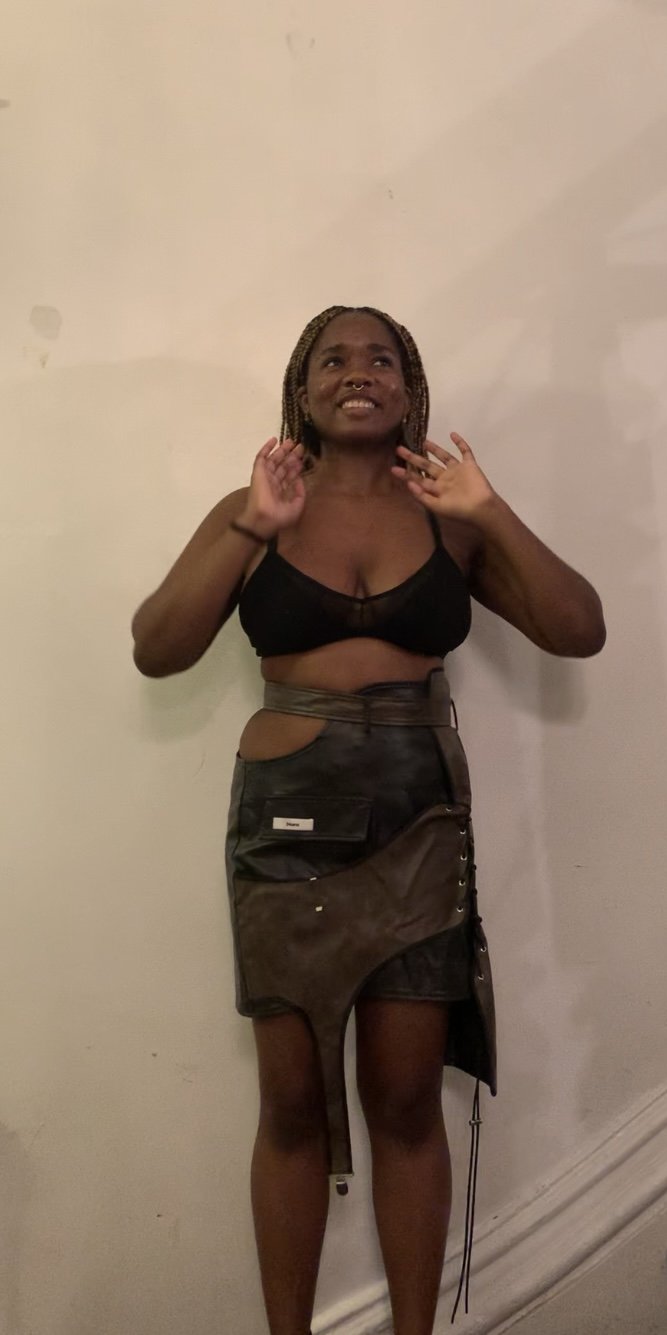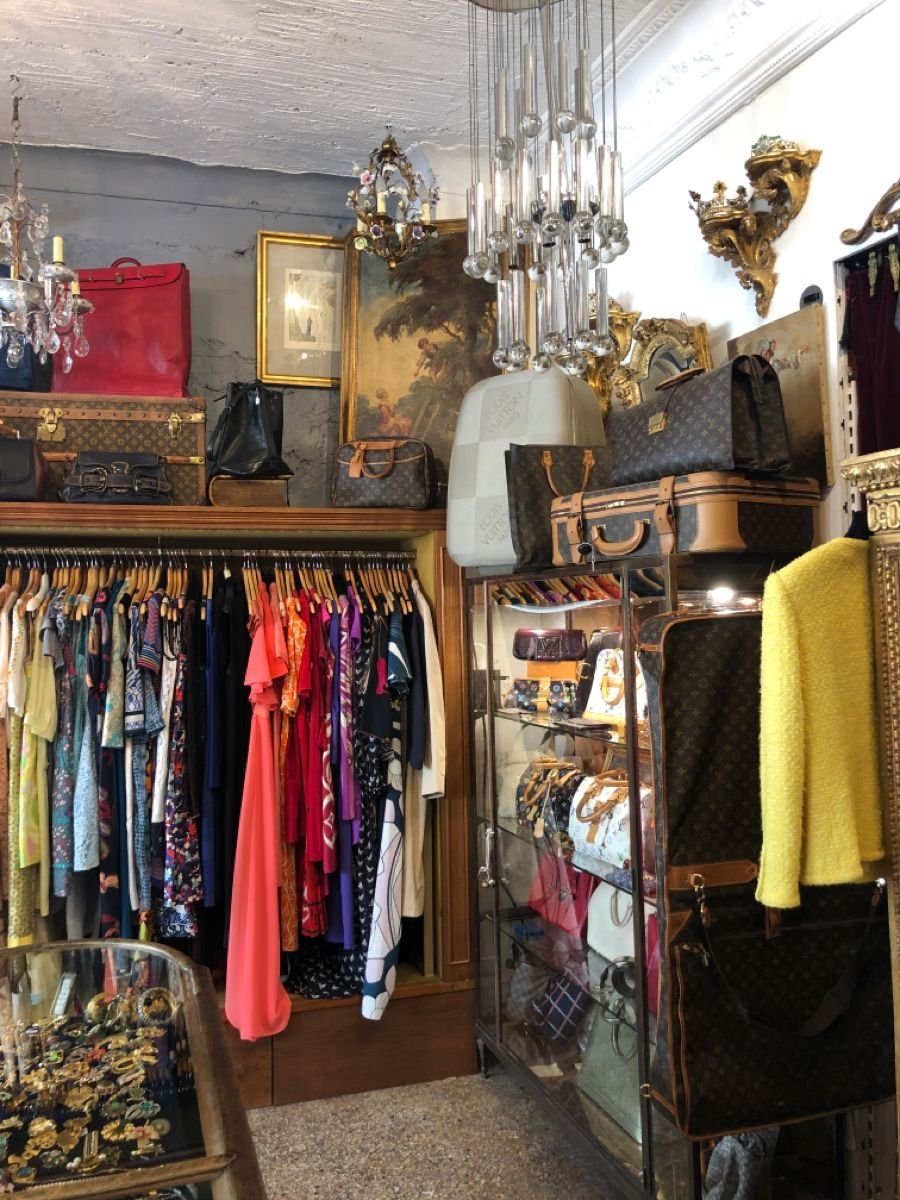I suspect Buffalo Exchange is like any retail job: draining, underpaid, and mismanaged. Though I did enjoy my time there overall, learning the ins and outs of running a secondhand store, I can acknowledge that as a former employee, my coworkers and I were deserving of more than the company was willing to give. It was us, the workers, who held the place together. We would frequently provide free advertising with our well-curated outfits and a fruitful experience for the customers. The joy of the place did not come from the work itself or from the clothes but from the people. Queer and POC transplants whose first stop in the city was a nearby Buffalo Exchange. Though I hate being wax poetic about my own home and going on about how gentrifiers warp it into something it is not, these were people who had big dreams and personalities so indicative of New York that they made me want to see my city with fresh, innocent eyes, and love it all over again.
On the topic of the store itself while I’m glad I worked there for the summer because of the good company and the items I was able to procure, you would much sooner find used, dirty Shein than anything noteworthy. But perhaps that's what makes the hunt thrilling and a great find that much more rewarding. Buffalo Exchange is not a true thrift shop. When I would find an item that was cute but not the most original, my coworkers would say “that’s thriftable” to indicate that it would be more worth it to find at Goodwill bins for $2 instead of $20. It would be fairer to see it as a resale shop. They price items not for what they are worth but for what people are willing to pay. The location I worked at was situated in a gentrified New York neighborhood so people were willing to pay quite a bit, making the most basic items worth a pretty penny. As we would have to say over the phone: “Buffalo Exchange takes the best of all seasons, current trends, and styles.” Therefore, you are likely to find the store over-saturated with micro trends and new merch they get from independent sellers. Surprisingly though, those sell the most.
I would recommend shopping there if you need something quick and on-trend. For instance, Buffalo Exchange is perfect for anything Zara, Jaded London, Supreme, H&M, and other fast fashion brands that you are willing to pay marginally less than you would by buying retail. With no guarantee, however, that you are paying less than retail for an item. Even though it may be difficult to find a masterpiece or not drop $70 for three items, it's not impossible. My first tip would be to spend as little money as possible. I often say I became an extreme couponer during my time there, and though I did have an employee discount, it was slim and hardly useful. So, to keep the cost of procuring a new wardrobe down, I sold a lot of old clothes, shoes, and accessories to get a trade that I could use for new clothes. Not every Buffalo Exchange is going to like your stuff. Some of their buying practices still perplex me, which is why it’s useful to bring in a lot of items and go to multiple stores (sometimes they see if you sold at a different location that day, so it might be helpful to spread selling over a few days). Shopping-wise, the store is a hit or miss. Some days you’ll find the most breathtaking vintage handmade blazer, and the next you’ll find five shirts that say “Tacocat” in comic sans font with a Pusheen graphic, priced at $32 a piece. But, if you want to find something good, you’re going to have to dig but also look at the mannequins. Employees will put some of the store's best items, those they don’t want to buy at least, up there. You might even find some of the items they do want, I hid a dress up on the mannequins for a month until my employee discount kicked in. Overall, my entire summer there, I spent about $50-100 of my own money on a closet's worth of clothes, rebuilding my wardrobe for little to nothing.
Here are a few of the things I got and how much I paid:
ITEM #1: Frank Ocean T-Shirt
This Frank Ocean t-shirt is so incredibly cool! Every single hype beast who came into the store wanted it. It says “Blond Boys Don’t Cry” on the back and looks like it’s made from a knitted material but it’s polyester. It was priced at $36 but I got it for $0.
ITEM #2: Fake Coogi
The fake coogi sweater, cowboy boots, and brown sunglasses are all Buffalo Exchange purchases. The sweater was priced at $45 and I got it for $8, the boots were priced at $55 and I got them for $0, and the glasses were priced at $10 and I got them for $4.
ITEM #3: Grandmas Dress
The woman that sold this in said her grandmother made it by hand. I don’t know why she sold it, but it is absolutely gorgeous and was priced at $26 but I got it for $0.
ITEM #4: 24ans Skirt
This is one of my favorite skirts. The shape, fabric, and color make it visually engaging and fun to style. It was priced at $26 and I got it for $0.
ITEM #5: Face Jacket
Once I saw this jacket I knew I had to have it. It’s an absolute showstopper and one of the best items I got during my summer. It was priced at $90 and I got it for $0.
ITEM #6: Vintage Versace Blazer
The gods blessed me the day I found this real vintage Versace blazer. I did have to work two fill in shifts to get enough extra trade to get it but it was worth it. It was priced at $90 but I got it for $20.
ITEM #7: Tie Dye Dress
Before I bought this Newport New dress, I found it on Depop for $150. But it’s Depop so their prices are just as untrustworthy as Buffalo Exchanges. This dress was priced at $16 and I got it for $0.
















